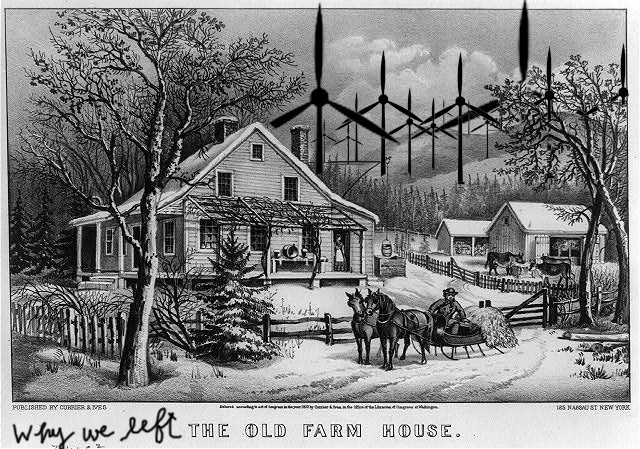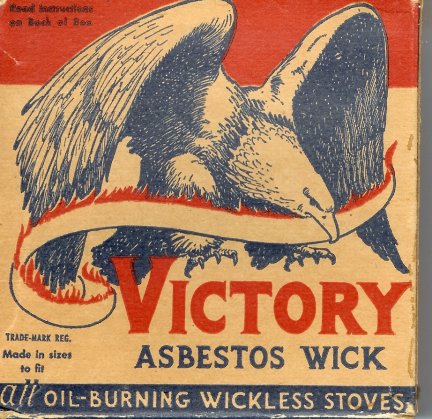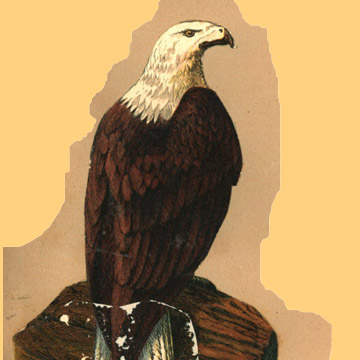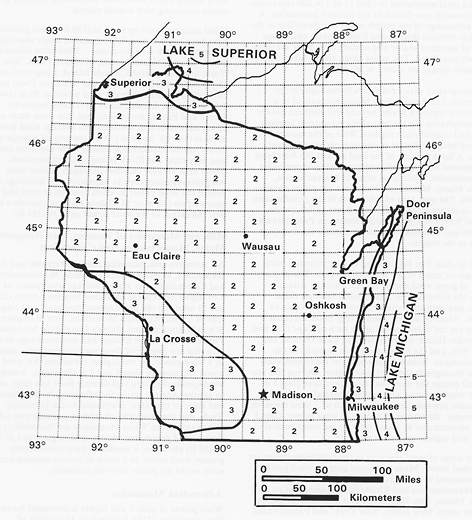2/21/08 Wind Related Meeting TONIGHT, Feb 21, 2008 Magnolia Township Hall, 7pm!
 DOING ANYTHING TONIGHT AT AROUND 7pm? Please come to the Magnolia Town Hall for a meeting about the industrial wind farm proposed for our community! 67 turbines 40 stories tall in 36 square miles means all of us will have them for neighbors. There are much better renewable energy options for Rock County! You can make a huge difference just by showing up at the meeting! Don't let this happen to our farmlands!
DOING ANYTHING TONIGHT AT AROUND 7pm? Please come to the Magnolia Town Hall for a meeting about the industrial wind farm proposed for our community! 67 turbines 40 stories tall in 36 square miles means all of us will have them for neighbors. There are much better renewable energy options for Rock County! You can make a huge difference just by showing up at the meeting! Don't let this happen to our farmlands!
2/20/08 What's Something Tobacco, Asbestos, and Industrial Wind Turbines Have in Common? And what's the difference between informal peer review and formal peer review.

Are you old enough to remember when asbestos was considered to be not only harmless, but helpful?
Are you old enough to remember when we were assured tobacco wasn't bad for us?
If you aren't and you'd like to watch an old ad that says more doctors smoke Camels than any other cigarette, click here. To see the Chesterfield man explain how Chesterfield Cigarettescause no harm, click here
The same thing is going on with industrial wind turbines. We are told by the wind developers that 1000 feet from our homes is safe, and the state of Wisconsin includes this in its draft wind ordinance.
But what is the safety of a 1000 foot set back based on? These machines are 40 stories tall and have a blade span wider than a 747 and we're told not to worry, they are quite safe.
It was recently discovered there were no scientific or medical studies used back up the safety of the 1000 set back. On the contrary, the set back seems to have been determined by wind lobbyists and a power company in Florida.
However there are scientific studies that show industrial wind turbines sited closer than 1.5 miles from a residence can have serious negative impacts on human health.
The wind developers tell us 1000 feet is safe. What they really should be saying is 1000 feet is profitable.
In response to the Union Township's Large Wind Turbine Citizen's Study Committee's final report (click here to download a copy of it), a representative of Wisconsin Public Power Inc. (WPPI) contacted one of the doctors whose findings are used to support a larger setback.
We thank Dr. Calvin Luther Martin, PhD, for his kind permission to reprint his response to WPPI and urge anyone who is alarmed as we are by this letter to write their legislators.
AN IMPORTANT NOTE FROM THE BPRC RESEARCH NERD!: The United States National Library of Medicine (NLM) (click here for source) defines peer- review this way:
Peer review: the process by which manuscripts submitted to health, biomedical, and other scientifically oriented journals and other publications are evaluated by experts in appropriate fields (usually anonymous to the authors) to determine if the manuscripts are of adequate quality for publication.
We are still researching the difference between informal and formal peer reveiw, but prefer to err on the side of caution!
We believe Dr. Martin is referring to INFORMAL peer-review in his letter, and not formal peer review. The letter is also a bit sassy, which puts it on the informal side as well. Still, it makes many good points and we are glad to post it with the cautionary note that to the best of our knowledge, formal peer review of Dr. Pierpont's work has not yet happened.
(Download a pdf of the original signed letter by clicking here)
Nina Pierpont M.D. PH.D.
19 Clay Street
Malone, New York 12953
February 20, 2008
Erick Kostecki
Renewable Energy Project Coordinator
Wisconsin Public Power Inc.
1425 Corporate Center Dr.
Sun Prairie, WI 53590
Dear Mr. Konstecki,
Dr. Pierpont has asked me to reply to your note, excerpted below. (She’s buried by her medical practice. You understand. I’m her husband.)
“I am an employee of Wisconsin Public Power Inc. a regional non-profit electric power supply company serving 49 customer-owned electric utilities in Wisconsin, Iowa and the Upper Peninsula of Michigan. As an electric utility in the state of WI…we are using a diverse mix of renewable technologies that includes wind…. The major portion of wind energy comes from power purchase agreements from large wind farms…
As you may know, a recent report by the town of Union Large Wind Turbine Citizen’ s Committee on wind turbine siting issues makes reference to your testimony before the New York Legislature March 7, 2006 and describes you as “author of several peer reviewed studies on Wind Turbines” on page 22. As part of our ongoing dialogue with community members and stakeholders, we’ve been asked to respond to questions based on those articles, however, we have been unable to locate any such peer-reviewed articles. So that we may follow up on these questions, could you please refer me to the titles and publication details for any of your peer reviewed articles on Wind Turbine Syndrome? “
The Town of Union, Wisconsin, Large Turbine Citizens Committee is altogether correct to note that Dr. Pierpont’s reports have been peer- reviewed. They all have been peer-reviewed.
Peer-review means that peers (scholars, clinicians or scientists) in the same or cognate field as the author have reviewed that individual’s work and passed judgment upon it. Dr. Pierpont’s reports have been reviewed by numerous physicians and scientists over the
3 ½ years she has been writing her reports. (Peer review is always an invisible part of one’s report, or, in the case of a published article, one’s article and even book. Incidentally, as a former university professor I have published numerous scholarly books and articles and refereed and reviewed may book and article manuscripts.)
In your note you say you have been unable to find these peer-reviewed studies by Dr. Pierpont. They’re right in front of your nose, my friend!
I can take this a step further. As a result of the positive judgment of her peers (clinicians and scientists) who have reviewed her work and communicated their judgment to her (like a good clinician-scientist, Dr. Pierpont has sought out such judgment and review by her peers), Dr. Pierpont is about to submit a major article on Wind Turbine Syndrome to a leading clinical journals for publication. (This article, too, will be peer-reviewed.) I will be happy to send an offprint when it comes out: however that might be necessary since it will undoubtedly be picked up by the major media. (Nevertheless I’ll try to remember to mail you an offprint)
I should add that Dr. Pierpont strongly disagrees with the Town of Union “Large Wind Turbine Citizen’s Committee’s report in one respect. (She’s glad you contacted her so she can convey her dissent to you, hoping you may prevail on the committee to fix their blunder.) In her forthcoming article she establishes 1-½ miles as the minimum, clinically defensible setback from homes, etc. The committee’s ½ mile set back is clinically and scientifically indefensible, and she urges you and your colleagues to take the committee to task on their shoddy work and insist they bump that setback up to 1.5 miles.
We gather from your reference to community members and stakeholders that you are sensitive to proper setbacks, so we appeal to you to use your good offices to insist the committee fix it’s absurd, and as I say, indefensible ½ mile setback. (We were so exercised by this slip-up I actually contacted a committee member and expressed Dr. Pierponts strong disapproval of this figure. Privately, our hunch is they got it from wind developer, not unlike the 1000’ setback heretofore favored by the State of Wisconsin)
I might add (since I gather you’re neither a scientist or a physician—and that’s okay, I’m not either) that whenever Dr. Pierpont gives expert testimony in court (something she often does) she is never asked by the judge if she has published her clinical assessment of the a particular patient in a refereed professional journal. The judge properly assumes that, given her credentials, and her license to practice medicine, she is qualified to offer such clinical judgment. Of course she substantiates her judgment and claims by clinical evidence, just as she does in the Wind Turbine Syndrome reports and papers which you’ve doubtless read. (See the footnotes: It’s all there. Lots of it.)
One might rightfully say that she invoked the customary court-of-law approach to evidence and authority (her authority, in this case) in her work on Wind Turbine Syndrome. Of course if the wind developers can find a similarly qualified physician-scientist (MD-PhD, like Dr. Pierpont, or simply MD will suffice) who feels he can refute her work, based on standard clinical protocols and evidence, she would be eager to consider that evidence.
In 3 ½ years of researching and writing reports on Wind Turbine Syndrome, not a single clinician-scientist can come forward to refute her work. Nowhere in the world. Impressive, yes?
An aside about Dr. Geoff Leventhall, whose name is often mentioned by wind developers. Mr. Leventhall, with whom Dr. Pierpont has enjoyed a spirited and mutually cordial correspondence, is not a clinician- scientist. He is a PhD in physics. (I would be happy to forward his c.v.) Dr. Leventhall has no training, that we are aware of , in anything clinical. It’s quite proper for him to comment on turbine noise as physicist, but any opinion he might offer about health effects from turbines would have no standing among clinicians—for the simple reason that, after all, he’s not one. (This would be like me, with my PhD in history, commenting authoritatively on matters of physics. You understand.)
Thanks for your interest in Dr. Pierpont’s work and we do hope you will insist that the committee fix its setback recommendation.
Sincerely,
Calvin Luther Martin, PhD
Associate Professor of History (retired)
Rutgers University
New Brunswick, NJ
www.calvinluthermartin.com
A Note from the BPRC Research Nerd: They say there are two sides to every story: Here are two billboards that happen to be right next to each other. There may be  two sides to this story, but----
two sides to this story, but----
1/19/08 How Green is a Bird Killing Machine? And Have You Seen the Bald Eagle at Magnolia Bluff Park?
Have you seen the bald eagle at Magnolia Bluff County Park? The park is located on North Croak Road between Hiway 59 and Finneran. If you find yourself in that area, be sure to look up. If you don't like sad news about raptors like our Magnolia Bluff bald eagle and 40 story industrial wind turbines, read no further--
Though the wind industry continues to downplay the impact industrial wind turbines have on birds, the latest scientific studies are causing concern among environmentalists everywhere.
Under a January 2007 settlement agreement, wind farm operators agreed to shut down or relocate 300 of the most lethal wind turbines during the high point of the migration season in November and December. In addition, a team of scientists officially known as the Scientific Review Committee was established to study the ongoing number of bird kills.
On December 21, the Review Committee released findings indicating raptor deaths had not declined. In response, the committee recommended the shutdown be extended from two months to four months, through February each year, and an additional 309 new turbines be shut down or relocated during the peak migration period. Even so, the committee estimated the four-month shutdown might reduce deaths by only 30 percent.
"We are deeply concerned that we haven't seen a reduction in bird deaths, and concerned as well that certain terms of the settlement were apparently not fully implemented on the agreed-upon timeline," said Elizabeth Murdock, executive director of the Golden Gate Audubon Society.
Murdock also expressed concern that the Altamont Pass wind farm operators are objecting to the Review Committee's recommendations to extend the time period for shutting down some turbines. "The highest raptor migration is during these four winter months, which coincide with the lowest amount of power generation at Altamont," said Murdock.
"Taking the latter point into account, shutting down shouldn't be a hardship," Murdock observed.
-- H. Sterling Burnett
How about a video of a wind turbine on fire? Click here
This one is burning from the bottom. Click Here
Or, why not watch a high-speed train shooting through a wind farm? click here
How about some footage taken from the top of a 400 foot tall industrial wind turbine with improvisational jazz playing in the background? If you have a fear of heights or improvisational jazz do not CLICK HERE
2/18/08 Why Didn't the Representative From EcoEnergy Know What Wind Class Our Area Falls Into?

Need Help Identifying The Bull?
Why wouldn't an EcoEnergy representative answer the most basic question about the wind resource in our area? Did he really not know the answer?
On February 14th at a special zoning meeting at the Magnolia Township Hall regarding a conditional use permit for the tower EcoEnergy is using to gather and sell wind speed data, Mr. Alex DePillis, an EcoEnergy representative, was able to tell us that class 4 areas of the state were the best sites for industrial wind plants. When asked what wind class our area fell into, he hemmed and hawed and then said he didn't know.
Our BPRC Research Nerd had a hard time believing that one.
Anyone who has done even the smallest bit of research on this subject knows our area is rated class 2, between poor and fair in terms of wind energy.
Why did he say he didn't know?
The US Department of Energy map rates us as class 2. (Here's the map)

If there isn't enough wind in our area, why are they trying to put such a big wind farm here?
The answer? We have the transmission lines, the legislative loopholes, the tax breaks, renewable energy credits , and landowners willing to trust the word of EcoEnergy employees like Mr. Depillis enough to sign away rights to their land for the next 30 years.
It's not about the environment at all. There are much better renewable energy options for our area, ones that are ideal, like manure digesters. (Some of us felt we could have used one in the town hall that night.)
The Research Nerd wasn't the only one in the crowd who had the feeling Mr. DePillis was being less than honest and more than a little condescending. He was there to speak to us about the wind-data collected for nearly a year from the met tower on hiway 213. When he said he didn't know the answer to that most basic question, many of us were left scratching our heads.
This is the expert they are sending us?
And many of us were unpleasantly surprised when Mr. Depillis' demanded to know the name of the person who asked the question and to know if that person was a resident.
Why would he do that?
Smell a fish? We sure do. Intimidation seems to be the name of the game. Unless we stand up to it, we'll have "experts" like Mr. Depillis and other employees of EcoEnergy, and their lawyers calling the shots for the rest of us.
IMPORTANT! The next Magnolia Township wind-turbine related meeting is this Thursday, February 21, 7pm, Magnolia Town hall on county hiway A, west of 213. Come and get to know your zoning board members! It's free, easy, and an experience of democracy-in-action.
 PS! Did you know that at training sessions for wind developers they are advised not to wear a suit when talking to rural people because we are supposedly less likely to trust people in suits? There are LOTS of tips on how wind developers should talk to us rural people. The Research Nerd heard a lecture by a wind developer who said "Sure it's easy to get some old farmer and screw him to the wall" with a wind contract, but developers should really try their very best not to do that. He also said that this was not about the environment, it was about business, and the guiding principle of business is to push as much of the risk of any deal onto the other guy. We believe the "other guy" he means is the one driving the tractor.
PS! Did you know that at training sessions for wind developers they are advised not to wear a suit when talking to rural people because we are supposedly less likely to trust people in suits? There are LOTS of tips on how wind developers should talk to us rural people. The Research Nerd heard a lecture by a wind developer who said "Sure it's easy to get some old farmer and screw him to the wall" with a wind contract, but developers should really try their very best not to do that. He also said that this was not about the environment, it was about business, and the guiding principle of business is to push as much of the risk of any deal onto the other guy. We believe the "other guy" he means is the one driving the tractor.
Worried about Industrial Wind Turbines and Birds? We are too. Though the wind industry downplays the impact of wind farms on birds, new scientific studies are beginning to tell us otherwise. At the site of one wind farm, in spite of efforts to correct the problem, more birds are dying than ever. Click Here to Read About It
2/10/08 What power lines? What do you mean they can take my land? What's eminent domain?

Landowners in the path of a proposed transmission line for the Galloo Island Wind Project have been threatened with eminent domain if they don't accept payments for easements to the property.
Farmers contacted by the Times on Friday said they have not agreed to the payments, preferring to wait until they attend an informational meeting organized by local agricultural interests.
"I noticed it (eminent domain) when I read it," William E. Eastman, an Ellisburg farmer, said. "We decided to wait for the workshop."
The power lines will reach from Henderson through Ellisburg, Sandy Creek, Richland and Albion to a larger transmission line in Parish.
The letter states the assessed value of land and the acreage Upstate NY Power Corp. would need for its line, totaling the value for that area. Assessments are not tied to market value, which can be established only through sales or appraisals.
The letter then reads, "However, in order to avoid the expenses, delays, and related inefficiencies of eminent domain," it offers a payment about four times the assessed value.
Upstate NY Power is backed by the global investment and advisory firm Babcock & Brown Limited. Babcock & Brown or its affiliates have never used eminent domain to obtain land, spokesman Matthew Dallas said.
"We're working for a voluntary transfer of the easements required," he said. "We're offering significantly more than the fair market value."
 But if a landowner doesn't participate, the company will look for alternatives, he said.
But if a landowner doesn't participate, the company will look for alternatives, he said.
Upstate NY Power does not have the authority to wield eminent domain, at least not yet. Upstate NY Power was formed through the state's transportation law, which potentially gives it the ability to use eminent domain to obtain easements for electricity transmission.
But first, the company must receive a certificate of environmental compatibility and public need from the Public Service Commission. Upstate NY Power has not yet filed any applications, so it "has not been granted status," PSC spokeswoman Anne V. Dalton said.
Jefferson County Agricultural Coordinator Jay M. Matteson said agricultural interests are not lost in the review process. The state's commissioner of agriculture and markets is also "at the table," because much of the area that would be included is part of agricultural districts.
And the county also has a say. Michael J. Bourcy, community development coordinator for the Jefferson County Planning Department, said that any entity wishing to use eminent domain on more than 10 acres in an agricultural district must give a notice of intent to the county's Agriculture and Farmland Protection Board.
"One of the benefits of an agricultural district is that it can put a limit on eminent domain," he said.
If an entity claims land through eminent domain, it must pay the full fair market value of the property, which is determined in a court proceeding.
Farmers in Jefferson and Oswego counties first received a letter about Jan. 18 saying that their land could be host to transmission lines for a proposed power project.
"I was concerned when I saw the letter," said Douglas W. Shelmidine, a Belleville farmer and president of the board for the Jefferson County Agricultural Development Corp.
He decided that landowners needed more information. So the Agricultural Development Corp. and the Jefferson County Soil and Water Conservation District planned a workshop for Thursday.
The workshop will include presentations from Upstate NY Power, the state Department of Agriculture and Markets, the conservation district and an attorney. The Public Service Commission also may attend. The workshop will be from 7 to 9 p.m. at the Henderson Fire District Building on Route 178.
About Jan. 29, a second letter was hand-delivered by Gotec Land Services, hired by Upstate NY Power, to farmers who are in the planned transmission line district. That letter contained the actual offer and the phrase "eminent domain."
The letter also offers an extra $1,000 for legal fees. It gives the landowner 30 days to consider the offer before it expires.
Mr. Shelmidine said that Gotec asked if he would sign that day, so it could begin engineering work, but "it wasn't a pressured push," he said. He has been encouraging other farmers to wait, as he will, until after the informational session.
Mr. Eastman said other farmers he's talked to have similar reactions.
"Really, I guess it's going to be an important meeting," he said.
A NOTE FROM THE BETTER PLAN, ROCK COUNTY RESEARCH NERD: If you are as disturbed by this story as we are, you can do something about it this minute by writing your legisators and the editor of your local newspapers and letting them know you want people to look deeper into wind power and the impact it will have on our treasured community. Tell them we need laws that protect our residents, not laws that enable wind developers to take our land.
And THEN what happened? 120 land owners facing powerlines on their land want to know! Click here for the 2/15/08 update.
